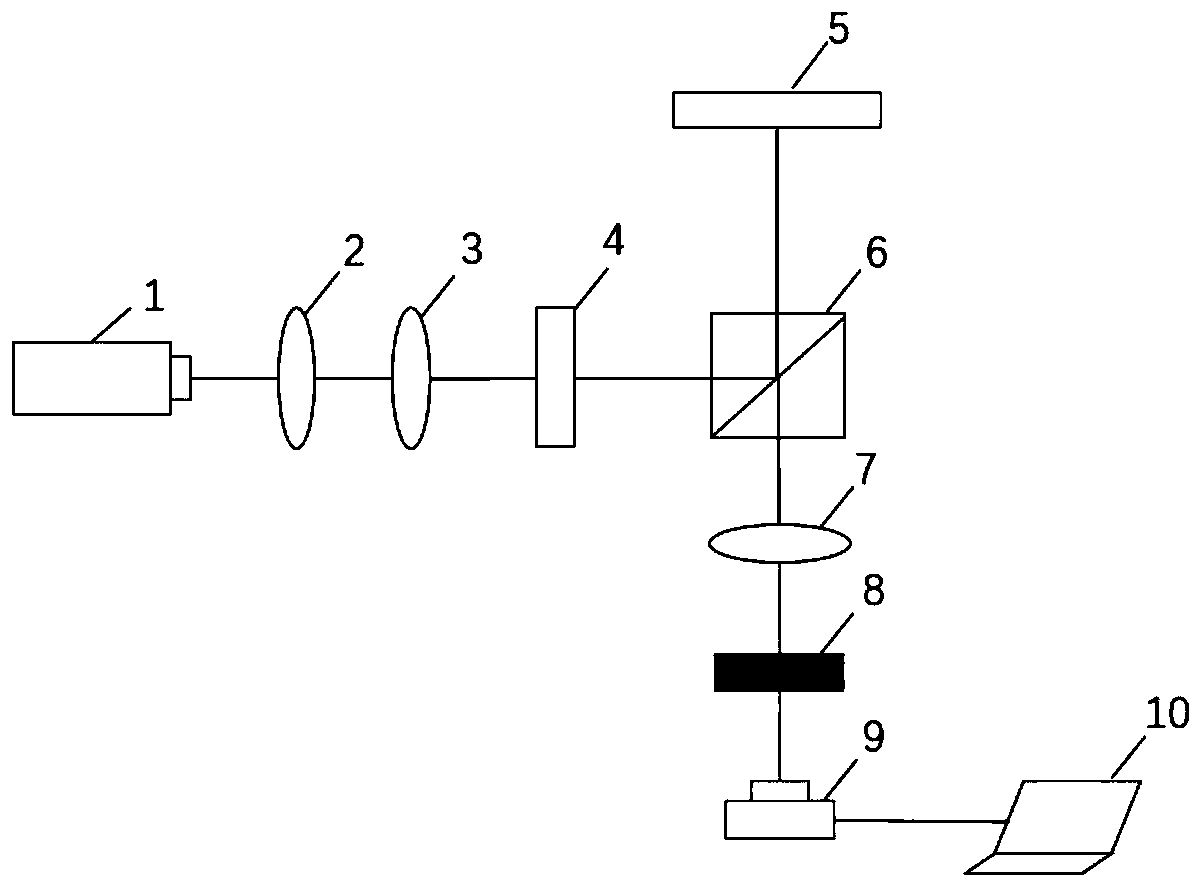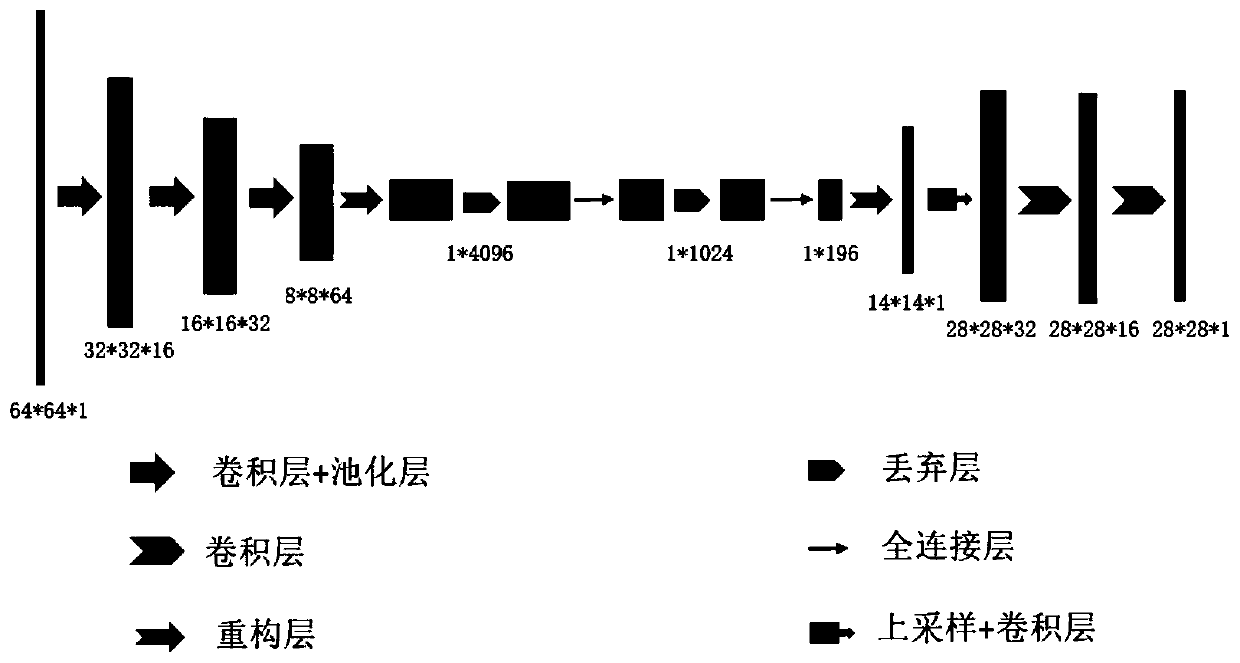Scattering imaging device and method based on deep learning
A technology of scattering imaging and deep learning, applied in the direction of neural learning methods, optics, optical components, etc., can solve problems such as difficult to deal with dynamic or changing disordered medium environments, high requirements for optical path accuracy, and long imaging calibration time, etc., to achieve The structure is simple, the accuracy of the optical path is not high, and the imaging speed is fast
- Summary
- Abstract
- Description
- Claims
- Application Information
AI Technical Summary
Problems solved by technology
Method used
Image
Examples
Embodiment Construction
[0031] Such as figure 1 As shown, a deep learning-based scattering imaging device includes a collimated light source 1, a first lens 2, a second lens 3, a linear polarizer 4, a spatial light modulator 5, a beam splitter 6, a third lens 7, Scattering medium 8, photodetector 9, image reconstruction module 10;
[0032] The collimated light source 1, the first lens 2, the second lens 3, the linear polarizer 4, and the beam splitter 6 are sequentially arranged along the first optical axis, and the spatial light modulator 5, the third lens 7, and the scattering medium 8 , The photodetector 9 is arranged along the second optical axis, the first optical axis and the second optical axis intersect at the beam splitter 6 and the second optical axis is perpendicular to the direction of the first optical axis, wherein the scattering medium 8 is arranged on the third lens 7 on the focal plane;
[0033] The light emitted by the collimated light source 1 is beam-expanded by the first lens 2...
PUM
 Login to View More
Login to View More Abstract
Description
Claims
Application Information
 Login to View More
Login to View More - R&D
- Intellectual Property
- Life Sciences
- Materials
- Tech Scout
- Unparalleled Data Quality
- Higher Quality Content
- 60% Fewer Hallucinations
Browse by: Latest US Patents, China's latest patents, Technical Efficacy Thesaurus, Application Domain, Technology Topic, Popular Technical Reports.
© 2025 PatSnap. All rights reserved.Legal|Privacy policy|Modern Slavery Act Transparency Statement|Sitemap|About US| Contact US: help@patsnap.com



